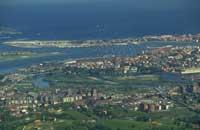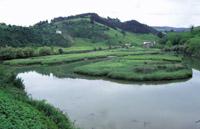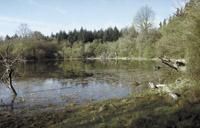Wetlands of the Basque Country (II): life in wetlands
2000/04/01 Estonba Mintxero, Mikel Iturria: Elhuyar aldizkaria
In the following lines we will try to approach this hidden and surprising life, but we must not forget that one of the most important characteristics of wetlands is its variability.
In general, two main areas are distinguished in wetlands: the flooded zone and the margins of the wetland. In addition, these main zones are divided into different spatial compartments and in each of them different communities of living beings are developed. Then, taking into account that the diversity of wetland types greatly hinders generalization, we will try to explain the composition and main characteristics of the flora and fauna of these natural systems.
Vegetation. Species of interest
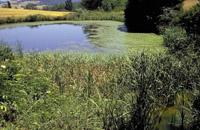
Due to the presence of water and above all to its variable depth, ecological gradients appear in wetlands. The simplest way to detect these gradients is by analyzing the vegetation, since in most wetlands the plants appear in belts with ecological conditions. Depending on the type of wetland, although the composition of species of the belts mentioned may vary, the living conditions of the plants along the gradients are quite similar in all of them. For this reason, in this introduction, we will analyze the vegetation belts in general, describing in detail each of the species formations that compose them in each type of wetland.
With perhaps excessive simplification, the vegetation of wetlands can be divided into three broad belts: open water, shallow water, and shore.
In open waters appear the most specialized spontaneous vegetation communities adapted to live in these media. In the areas of greater depth the vascular plants have great development difficulties, so the only primary producers present are unicellular algae and cyanobacterias of phytoplankton (plant component of plankton). In areas where the depth does not prevent the sun from reaching the bottom, along with phytoplankton, plants of macroscopic size (macrophytes) can be developed, so the plant diversity is much greater. In them we have a great variety of aquatic plants: those that live floating on the surface of the water, that always live under water, with some organs in the water and others out of the water, etc.
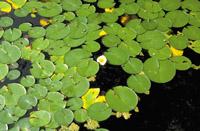
As for the vegetable communities that develop in shallow waters, it must be taken into account that in order to cope with the variability of the water level, they must be formed by well-adapted plant species, which are those that support the fluctuations of water that occur in wetlands over time. The plants that inhabit this belt of plants are species of hard and very lignified herbs that keep the roots in the water and the vegetative apparatus out of the water and that are known as heliophytes.
At the margins, however, in the area where the high humidity of the soil and the water table are separated from the terrestrial surface, a vegetable belt is developed that limits the water-dry transition. Along with the different herbaceous species adapted to live in well impregnated soils, there are sketches of trees and shrubs such as willows, alders and thousands.
Fauna, true biological treasure
The abundance of different types of wetlands, the diversity of environments that exist in each of them, the special conditions of development of the life of wetlands, and the food wealth that appears in most wetlands, make these ecosystems a place of refuge for the most voracious and interesting animal communities.
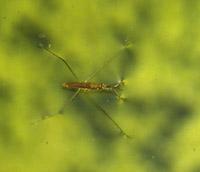
In the case of the fauna, the water zone is the richest, since both the photosynthetic production of the plants and the flows of the margins give rise to the highest concentrations of organic matter.
Zooplankton (animal component of plankton) is highly developed in most wetlands. The zooplankton consists mainly of two groups of animals: crustaceans (cladoceros, copepods, larvae of different crustaceans,...) and rotifers, although there are also representatives of other groups.
Other animals that inhabit the waters of the wetlands form the nectona (group of animals that swim actively). The majority are fish, especially of the families of salmonids and cyrilles in continental waters, but there are also representatives of other groups of animals such as amphibians (frogs, tritons...), reptiles (water snakes, galapagos...) or mammals (otters, water rats...). Others, however, live on the surface of the water and form a component called neuston. These animals, which keep this thin layer and have adaptations to take advantage of the surface tension of the water to move through it, are mainly found in inland wetlands and most are insects, such as shoemakers, hurricanes and similar heteropterans or some of the types of Gyrinus and Acillus.
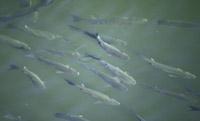
Another compartment of vital importance in the functioning of these ecosystems is the so-called bentos that develops in funds and sediments. The diversity of living conditions of this interphase between water and solid materials gives rise to a large number of living beings. The living beings of these communities play an important role, since, in addition to participating in the recycling of organic matter, they constitute one of the bases of the complex food chains of wetlands. Numerous groups of animals are represented in bents (crustaceans, molluscs, anellids, insects, nematodes...) and all of them have had to develop curious physiological and morphological adaptations to live in particular and harsh living conditions that include these aspects.
As for the margins of wetlands, although their changing nature greatly hinders the life of animals, there are a number of invertebrates and vertebrate traits that have been adapted to live in them. However, attracted by the abundance of trophic resources in these areas, it is of great importance the animals that approach to feed on the ecosystems near the wetland.
Birds, the best known
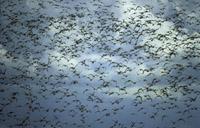
To finalize this simple analysis of life in wetlands, we have decided to dedicate a section to the ornithopauna of these ecosystems, which is the best known part of wetlands and to which we owe the fame and recognition of wetlands. The reasons for this prestige should be sought in the abundance and diversity of birds in wetlands. In vertebrates, birds are the most successful ones to live in these aspects. On the one hand, flying is a good locomotive system to move in it, and on the other hand, water and dense vegetation offer protection against predators. If we add to all this the predominant food wealth in most wetlands, the poultry greatness of these spaces is easily understandable.
In any case, it should be noted that in all these species of birds the Basque Country only has a few sedentary people, that is, they spend the whole year in the same wetland, since most are migratory and in our wetlands only appear or live in some specific reservoirs. In the migrants we can distinguish species nidificantes, wintering or passing in the Basque Country.
In all of them, the diversity and density of birds in wetlands is high, which causes strong competition between species. To reduce competition, the species of waterfowl have resorted to specialization, mainly in the exploitation of trophic resources. Some species are microphagas and feed on plankton, others are phytophylaxis, others are zoophytes (fishermen, hunters, insectivores, bordering...) and there are also omnivorous species.
To better know all this diversity, aquatic birds can be divided into different groups. Let us analyze more thoroughly each group.
Swimming birds and divers
The most important characteristics of the birds that are part of this group are the water-repellent plumage that, despite being wet, serves to maintain the flight capacity and body temperature, as well as the body adaptations for diving, such as fingers joined by membranes or short fins.
Among the divers and divers can be distinguished two main groups: on the one hand, the bats and heather that form the order Podicipediformes, and on the other, the geese, ducks, cercetas, paita, porrones, sierras and others. In coastal wetlands we have two other groups, that of the colimbos and cormorants that form the Gaviiform Order.
Within the antserbiforms can also be distinguished two groups according to eating habits: divers and swimmers. The first, to move better under water, have short legs and fins, so they are not good frills. This group is formed by species of porrones and red ducks. The seconds, however, have longer necklaces and legs and stronger fins, so they are good flyers. Within this group are included the rest of the antserantes.
Birds of carriages
In comparison with the previous ones, birds that inhabit the carriages that develop on the shores of wetlands do not present a significant adaptation to swimming, since they spend most of the time in areas aereas or muddy substrate of these zones. For this reason, in these birds predominate the fingers and long taros that allow a better maturation of the vegetation and an easy mobility in muddy soils. On the other hand, to be able to move within the dense vegetation, they usually present narrow bodies and laterally stepped. Finally, to protect themselves from predators, these birds, besides being soloists, tend to have cryptic and disruptive colors, since the defensive strategy is based on enemies not seeing.
As for food, zoofagos predominate in these birds, since the lignification of the carcass plants makes it a food very difficult to digest.
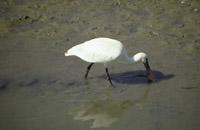
On the one hand, the Rallidae family of the Order Gruiformes (copetazurias, water chickens and water chickens) and, on the other, the Silvidae family of the Order Passerformes (reeds, reeds and birds) can also be distinguished from the carriages.
Large limestones
These birds of the neck and long legs form a heterogeneous group that includes birds related to wetlands (ardeidos, spatula...) and species related occasionally to wetlands (amiamococos, cranes...).
Among this group, the Ardeidae family deserves special mention, which groups herons, herons, amiltxos and birds of this type. All the ardeids that are characterized by carrying collado to the fly are birds of prey of wetlands. Its main features are long legs and neck, slender and elegant bodies and sharp peaks in the form of cons. The long and thin legs, without scrubbing the dams, are ideal to move in shallow waters. However, the long and flexible hills and the peaks in the form of azcons are an effective hunting tool.
In the wetlands of Euskal Herria you can see nine species of ardeidae: royal and red heron, common garceta, common garceta, hat, crab and large, common amiltxori and small and common bull bird. However, although some are very common (real heron, small heron...), others live in a very worrying situation in Euskal Herria and around the world (crab heron, common bull...).
On the other hand, the Espátula is a regular migrant in the Basque Country, so it is not difficult that during the month of September the picoteo groups pass through our skies or visit our best preserved wetlands. These specimens that we see in the Basque Country come from the only nest colony in the central area of Holland, which has suffered a serious decline in recent years. Other species of limestones that only remain in our wetlands during migration are black and white asbestos and common crane.
Limestones
The limestones are zoophysical birds that feed on the invertebrates of the mud and rafts. A large group of families of the order of Charadriformes, in which are included slides, chorlitejos, bernagorras, agachos, jaquiscos, kurlints, zancudos, sea micas and similar birds.
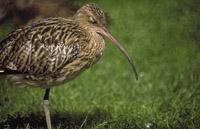
Despite belonging to several groups taxonomically, the fact that the type of food is the same causes adaptations and similar anatomical and physiological characteristics. In these characteristics, it is worth mentioning the presence of zones of high sensitivity in the peaks of detection of prey or the legs and long and strong peaks necessary for the mud and the capture of prey. However, the search for food in the same place causes a strong competition between species. Consequently, the species of limicelae are highly specialized, feeding on various invertebrates that inhabit different depths and substrata according to the lengths of the legs and peaks. The small limicolos (timbres, chorlitejos, pedregales), following the swing of the waves, circulate continuously from one side to the other on the edge of the water. They detect their prey (surface invertebrates) through sight and hearing and move non-stop. Medium-sized limicolos (bernagorras, eyelashes, timbres) are periodically introduced into shallow waters for the capture of surface invertebrates and low-depth excavators. In this case, in addition to sight and hearing, touch is fundamental to catch prey. Finally, large limicolos (kurlintas, balancines, buttonholes, ditch) always feed inside the water, especially taking advantage of the touch to detect dams (invertebrates excavating deep galleries).
In general, in the Basque Country, most of the species of lemon are passive or wintering, since the nidificantes are only the chorlitejo chico, the madroño, the archibebe common, the avefrío, the becada, the zancudo and the taco.
Predators
The high production of swampy ecosystems produces huge amounts of biomass. All this energy is channeled from algae and invertebrates to specialized second and third category consumers, where birds of prey are found. However, there are not many predators who have adapted to the conditions of wetlands. In them, the fishing eagle deserves special mention, every year, during postnuptial migration, since in our wetlands some specimens are observable in fishing. Another predator adapted to the conditions of the wetlands is the marsh water, abundant in the inner wetlands. Despite not being predators closely related to wetlands, the red milano and the black milano are often approached in search of carrion or prey. Other predators of the day that less times approach the estuary from the nearby mountains are the red falcon, the pilgrim falcon, the common falcon, the royal eagle and the cenotic eaglet.
Despite not being related to the previous ones, nocturnal predators like diurnos are sporadic visitors who approach wetlands from the surrounding ecosystems. The species that are observed would be the attic, the owl, the birch and, to a lesser extent, the mochuelo. The Búho Pantano is a bird that likes open fields near the aquatic environment.
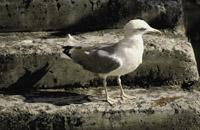
Others
In addition to those already mentioned, there are, during the whole year or at least, some marsh, other species of birds that live in it, exploiting the abundance of food offered by these rich ecosystems.
In them you can mention several species of birds that we usually relate to the sea, such as gulls, sea swallows, puddings, etc. In the case of coastal wetlands, in addition to those already mentioned, it is easy to observe Atlantic ditches with pelagic life, different species of gulls, pagals, blueberries, alcas, cilanes or storm birds, especially in the days of heavy autumn storm, in which the strong gusts of wind force these birds to take refuge in the bay and the estuaries to follow the coastline.
Other birds are attracted by flying insects that are born in these areas as swallows, beehives and sorbells.
On the other hand, the dense vegetation that develops in the environment of the wetlands, besides serving as residence to the birds own of the aforementioned carriages, is also an ideal place for other species of paseriform, such as verdinas, chipirones, potters, etc.
Finally, we cannot forget that most species of opportunistic birds (crows, herbaceous, mijas, sparrows...) are also frequent in wetlands.

Gai honi buruzko eduki gehiago
Elhuyarrek garatutako teknologia



